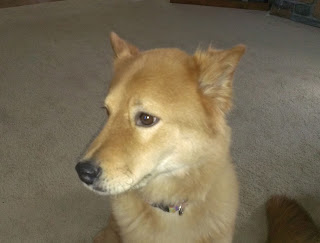I wandered down to Gettysburg today. Although I hadn't planned the trip, I did go into the National Cemetery. If you haven't been there, it is a very moving experience. Visitors are quiet and respectful. It's one of the few historical sites I've been to where I felt that history is living. On the outer fringes are graves of veterans of other wars, including World War I, World War II, and the Korean War. When you step into the cemetery, the first thing you see is the Gettysburg Address Memorial, pictured here.
This is not the site of the Gettysburg Address, which is actually near the Soldier's War Memorial. However, this memorial does include the text of the Gettysburg Address.
From there, I strolled toward the Soldier's Memorial. This is where I came across the graves of unidentified Union soldiers. These graves are identified by a headstone with a number of it. In the section I visited, the numbering began at 555 and ended at 1,000.
The graves of unknown soldiers, marked by a number. The concrete stack in front says, "445 unknown graves."
In front of these are rows of graves, divided by state and regiment. I took this picture to provide an idea of the scale of the graves.
The graves in this section extend to the memorial.
Rows of marked graves, arranged by state. The graves state the name and regiment of the dead. Many indicate they are unknown, and state their regiment.
The Soldier's Memorial, close to the site of the Gettysburg Address. Graves are laid out in a half-circle surrounding it.
Some history here: Many of the Union and Confederate dead were buried where they fell on the battlefield. Others were buried outside the battlefield in temporary cemeteries, outside homes, and in nearby fields. Shortly after the end of the battle, local residents and governments raised health concerns about the volume of unburied dead. Over 7,000 soldiers, both Union and Confederate, were killed. In August 1863, a section of the battlefield was selected as a cemetery for those killed defending the union. Because Confederate soldiers were trying to break from the union, they were not buried here, and their bodies were left in shallow graves on the battlefield.
Abraham Lincoln gave the Gettysburg Address on November 19, 1863, at the dedication of the cemetery. Most of the Union soldiers had not been reburied at the time of the dedication. The cemetery was completed around 1872, with over 3,500 buried Union soldiers.
In 1871, efforts to move the Confederate dead began. While records were scarce and unreliable, the remains of over 3,300 Confederate soldiers were eventually recovered. Most were moved to a cemetery in Richmond, Virginia. A few were sent to local cemeteries throughout the south.
I did not tour the battlefields today. Alexandra is coming to visit in September, and we will do that together.














